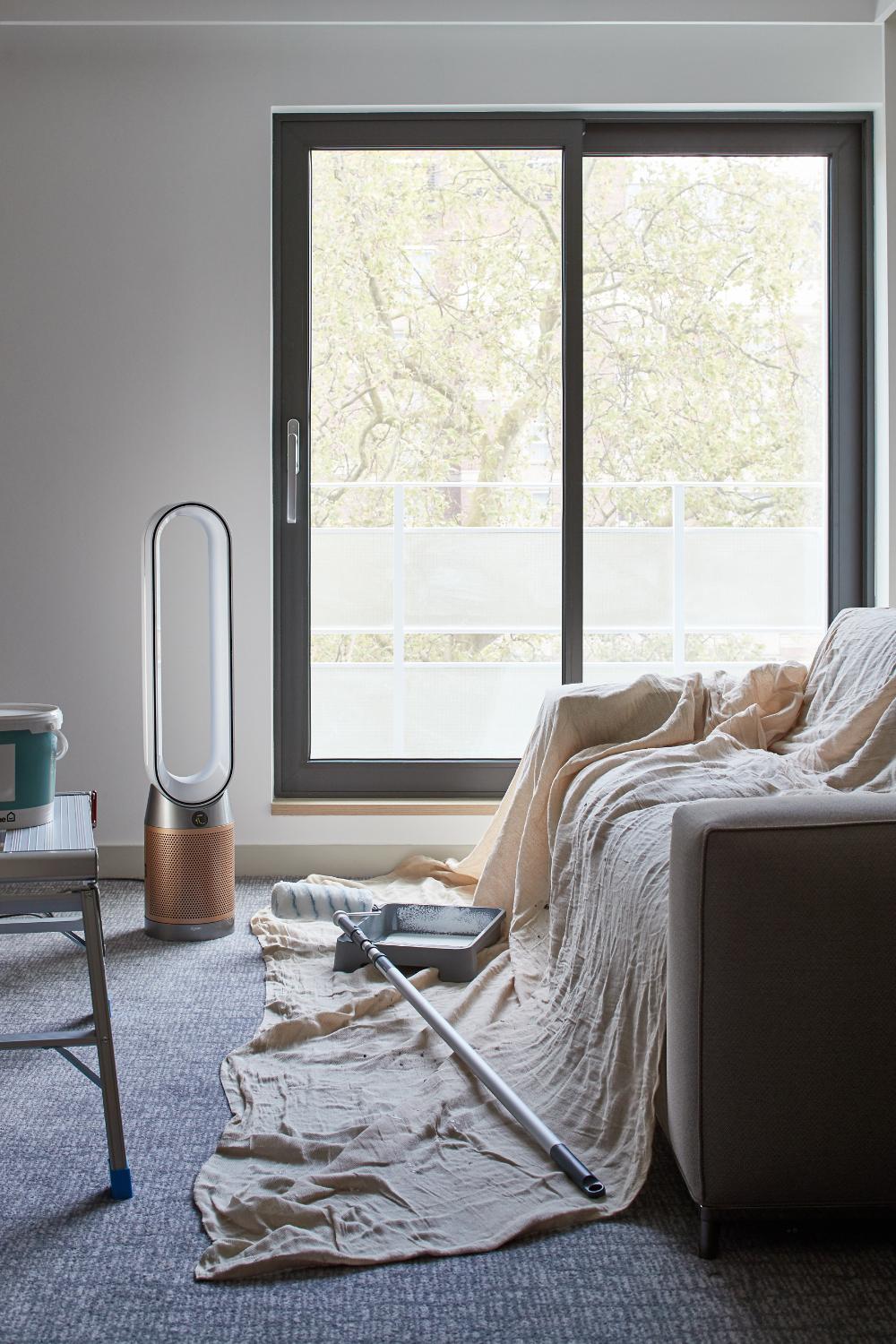Cleaner air, cleaner home: how to maintain a healthier space during home renovations
The summer months are traditionally peak home moving season. Moves and makeovers bring new furniture and paint, all of which could add to the levels of potentially harmful pollutant formaldehyde in the home.[1] With indoor formaldehyde concentrations up to 20 times higher in summer than in winter[2], here's how to maintain a healthier space during moves and renovations.
What is formaldehyde and where is it found?
Formaldehyde is a colorless gas which finds its way into the home through a variety of sources. Most commonly, it is released through furniture and wooden products such as plywood and fiberboard, which may use formaldehyde-based industrial resins. It can also be found in insulating materials and do-it-yourself products such as paint, wallpapers, varnishes and household cleaning products.[3] Being 500 times smaller than particles the size of 0.1 microns, it is particularly difficult to capture and if left untreated can lead to prolonged exposure due to continuous release of airborne chemicals, known as off-gassing.
Heat, humidity and formaldehyde
Research has shown that high room temperature and absolute humidity directly increase the release of VOCs, such as formaldehyde. Indoor formaldehyde concentrations can be up to 20 times higher in summer than in winter, depending on the indoor temperature and humidity conditions.[4] Beyond formaldehyde, high temperatures and humidity can encourage the breeding of dust mites that contribute to household dust, while their faecal matter contains allergens which are a common trigger for allergies.

-
How to keep your home clean during renovations
Ken Armstrong, Senior Air Purification Scientist at Dyson, shares his insight on the key pollutants that can occur during home renovation – and reveals how to maintain a cleaner space throughout.
1. Choose furnishings and flooring carefully
- If purchasing a new carpet, choose one that releases fewer VOC emissions and request the use of glues or adhesives that are non-toxic and low in VOCs. Have the carpet installed while the space is unoccupied and keep the windows open where possible.
- Choose low-formaldehyde products or buy second-hand furniture. Products off-gas less formaldehyde over time, while ULEF (Ultra-Low-Emitting Formaldehyde) and NAF (No Added Formaldehyde) furniture is increasingly available. If buying new, buy solid wood furniture or fully sealed pressed wood (MDF) furniture. To minimize points of off-gassing and reduce emissions from pressed wood furniture or cabinets, purchase items with a plastic laminate or a coating on all sides.
- Choose bedding and soft furnishings made with natural materials, like cotton and wool – and avoid treatments such as antibacterial additives and chemical flame-retardants. Use Low-VOC or Zero-VOC paints. These are now widely available and have been specially formulated to match the quality standards of conventional paints.
2. Air it out
- Open product packaging and allow new furnishings to “off-gas” before bringing them into your home. This is because consumer products that emit formaldehyde tend to release the highest concentrations when they are new. Request that new carpets are unrolled and aired out in a well-ventilated space before they’re fitted in your home. Ventilation is key. Naturally ventilate your space by opening a window or use mechanical ventilation such as a fan. Keep rooms well aired when you first bring new furniture or carpets into the home as well as during painting or varnishing projects.
3. Invest in a purifier
- The latest generation of Dyson purifiers features new solid-state formaldehyde sensing technology – to precisely detects the pollutant for the lifetime of the machine. They also include Dyson’s Selective Catalytic oxidization (SCO) filter which destroys formaldehyde at a molecular level, breaking it down into tiny amounts of water and CO2.[5] It then re-generates with oxygen from the air to destroy formaldehyde continuously.
4. Bust the dust
- Choose the right vacuum: There is no one-size-fits-all when it comes to vacuums and different vacuums are designed for different floor types and homes sizes. Choosing the right machine for your home will make a big different to the ease and speed with which you’re able to clean your home.
- Use the right tools: Dyson vacuums come with an array of accessories to ensure you have the right tool to clean every part of your home. From dual cleaner heads to vacuum both hard floors and carpets respectively, to the up-top adaptor to clean high up and the crevice tool to help you reach the little nooks and crannies, there’s an accessory for every cleaning need.
- Vacuum from top to bottom: As a general rule, Dyson engineers recommend cleaning the highest spots in your homes and moving downwards. For example, it is encouraged to vacuum your ceiling fans before moving onto your sofa and finally your floors. This ensures that you’re picking up any fallen airborne dust as you clean.
- Deep clean your house regularly: Dust can and will collect in all areas of your home, not just your floors. It is important to deep clean all areas of your home regularly to ensure that you’re removing all the dust from your home.
[1] WHO guidelines on indoor air quality: selected pollutants, World Health Organization, 2010.
[2] Liang et al: Long-Term Formaldehyde Emissions from Medium-Density Fiberboard in a Full-Scale Experimental Room: Emission Characteristics and the Effects of Temperature and Humidity. Environ. Sci. Technol. 2015, 49, 10349−10356
[3] WHO guidelines on indoor air quality: selected pollutants, World Health Organization, 2010.
[4]Liang et al: Long-Term Formaldehyde Emissions from Medium-Density Fiberboard in a Full-Scale Experimental Room: Emission Characteristics and the Effects of Temperature and Humidity. Environ. Sci. Technol. 2015, 49, 10349−10356
